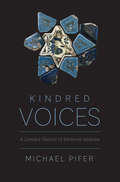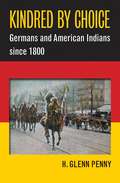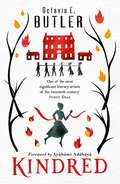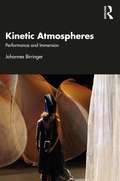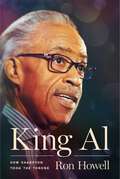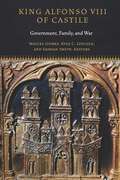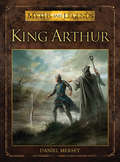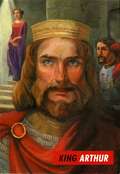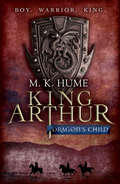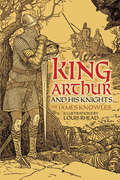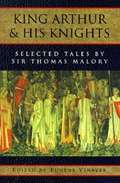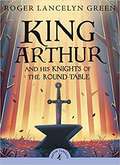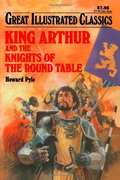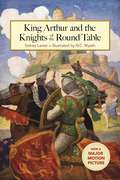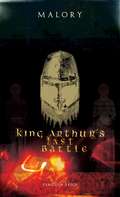- Table View
- List View
Kindred Spirits: Friendship and Resistance at the Edges of Modern Catholicism (Class 200: New Studies in Religion)
by Brenna MooreKindred Spirits takes us inside a remarkable network of Catholic historians, theologians, poets, and activists who pushed against both the far-right surge in interwar Europe and the secularizing tendencies of the leftist movements active in the early to mid-twentieth century. With meticulous attention to the complexity of real lives, Brenna Moore explores how this group sought a middle way anchored in “spiritual friendship”—religiously meaningful friendship understood as uniquely capable of facing social and political challenges. For this group, spiritual friendship was inseparable from resistance to European xenophobia and nationalism, anti-racist activism in the United States, and solidarity with Muslims during the Algerian War. Friendship, they believed, was a key to both divine and human realms, a means of accessing the transcendent while also engaging with our social and political existence. Some of the figures are still well known—philosopher Jacques Maritain, Nobel Prize laureate Gabriela Mistral, influential Islamicist Louis Massignon, poet of the Harlem renaissance Claude McKay—while others have unjustly faded from memory. Much more than an idealized portrait of a remarkable group of Catholic intellectuals from the past, Kindred Spirits is a compelling exploration of both the beauty and flaws of a vibrant social network worth remembering.
Kindred Spirits: Friendship and Resistance at the Edges of Modern Catholicism (Class 200: New Studies in Religion)
by Brenna MooreKindred Spirits takes us inside a remarkable network of Catholic historians, theologians, poets, and activists who pushed against both the far-right surge in interwar Europe and the secularizing tendencies of the leftist movements active in the early to mid-twentieth century. With meticulous attention to the complexity of real lives, Brenna Moore explores how this group sought a middle way anchored in “spiritual friendship”—religiously meaningful friendship understood as uniquely capable of facing social and political challenges. For this group, spiritual friendship was inseparable from resistance to European xenophobia and nationalism, anti-racist activism in the United States, and solidarity with Muslims during the Algerian War. Friendship, they believed, was a key to both divine and human realms, a means of accessing the transcendent while also engaging with our social and political existence. Some of the figures are still well known—philosopher Jacques Maritain, Nobel Prize laureate Gabriela Mistral, influential Islamicist Louis Massignon, poet of the Harlem renaissance Claude McKay—while others have unjustly faded from memory. Much more than an idealized portrait of a remarkable group of Catholic intellectuals from the past, Kindred Spirits is a compelling exploration of both the beauty and flaws of a vibrant social network worth remembering.
Kindred Spirits: Shilombish Ittibachvffa
by Leslie Stall WidenerA nonfiction picture book about the inspiring true pay-it-forward story that bridges two continents, 175 years, and two events in history--connecting Ireland, Choctaw Nation, Navajo Nation, and the Hopi Tribe.1845. The Potato Famine devastated Ireland. An ocean away, Choctaw people heard and were moved by the similarities to the injustice they had suffered on the Trail of Tears. Though they had little, they gathered money to donate.2017. Irish people built a statue to remember their connection to the Choctaw Nation--twenty-foot high feathers in the shape of a bowl.2020. COVID-19 disproportionately ravished the Navajo Nation and the Hopi Tribe. Irish people remembered the Choctaws' kindness and paid it forward by donating.Empathy creates kindness that lives well beyond a single act and includes more people the bigger it grows.
Kindred Voices: A Literary History of Medieval Anatolia
by Michael PiferThe fascinating story of how premodern Anatolia&’s multireligious intersection of cultures shaped its literary languages and poetic masterpieces By the mid-thirteenth century, Anatolia had become a place of stunning cultural diversity. Kindred Voices explores how the region&’s Muslim and Christian poets grappled with the multilingual and multireligious worlds they inhabited, attempting to impart resonant forms of instruction to their intermingled communities. This convergence produced fresh poetic styles and sensibilities, native to no single people or language, that enabled the period&’s literature to reach new and wider audiences. This is the first book to study the era&’s major Persian, Armenian, and Turkish poets, from roughly 1250 to 1340, against the canvas of this broader literary ecosystem.
Kindred by Choice
by H. Glenn PennyHow do we explain the persistent preoccupation with American Indians in Germany and the staggering numbers of Germans one encounters as visitors to Indian country? As H. Glenn Penny demonstrates, that preoccupation is rooted in an affinity for American Indians that has permeated German cultures for two centuries. This affinity stems directly from German polycentrism, notions of tribalism, a devotion to resistance, a longing for freedom, and a melancholy sense of shared fate. Locating the origins of the fascination for Indian life in the transatlantic world of German cultures in the nineteenth century, Penny explores German settler colonialism in the American Midwest, the rise and fall of German America, and the transnational worlds of American Indian performers. As he traces this phenomenon through the twentieth century, Penny engages debates about race, masculinity, comparative genocides, and American Indians' reactions to Germans' interests in them. He also assesses what persists of the affinity across the political ruptures of modern German history and challenges readers to rethink how cultural history is made.
Kindred: Neanderthal Life, Love, Death and Art
by Rebecca Wragg SykesIn Kindred, Neanderthal expert Rebecca Wragg Sykes shoves aside the cliché of the shivering ragged figure in an icy wasteland, and reveals the Neanderthal you don’t know, our ancestor who lived across vast and diverse tracts of Eurasia and survived through hundreds of thousands of years of massive climate change. This book sheds new light on where they lived, what they ate, and the increasingly complex Neanderthal culture that researchers have discovered. <p><p> Since their discovery 150 years ago, Neanderthals have gone from the losers of the human family tree to A-list hominins. Our perception of the Neanderthal has changed dramatically, but despite growing scientific curiosity, popular culture fascination, and a wealth of coverage in the media and beyond are we getting the whole story? The reality of 21st century Neanderthals is complex and fascinating, yet remains virtually unknown and inaccessible outside the scientific literature. <p><p> Based on the author’s first-hand experience at the cutting-edge of Palaeolithic research and theory, this easy-to-read but information-rich book lays out the first full picture we have of the Neanderthals, from amazing new discoveries changing our view of them forever, to the more enduring mysteries of how they lived and died, and the biggest question of them all: their relationship with modern humans.
Kindred: The ground-breaking masterpiece from the New York Times bestseller
by Octavia E. ButlerOctavia E. Butler's ground-breaking masterpiece, with an original foreword by Ayòbámi Adébáyò.'A marvel of imagination, empathy and detail' NEW YORK TIMES'The marker you should judge all other time-travelling narratives by' GUARDIAN'One of the most significant literary artists of the twentieth century. One cannot exaggerate the impact she has had' JUNOT DIAZIn 1976, Dana dreams of being a writer. In 1815, she is assumed a slave.When Dana first meets Rufus on a Maryland plantation, he's drowning. She saves his life - and it will happen again and again. Neither of them understands his power to summon her whenever his life is threatened, nor the significance of the ties that bind them.And each time Dana saves him, the more aware she is that her own life might be over before it's even begun.This is the extraordinary story of two people bound by blood, separated by so much more than time.'No novel I've read this year has felt as relevant, as gut-wrenching or as essential' CAROLINE O'DONOGHUE**MAJOR TV SERIES NOW ON DISNEY+**PRAISE FOR OCTAVIA E. BUTLER'Unnervingly prescient and wise' YAA GYASI'Butler's evocative, often troubling, novels explore far-reaching issues of race, sex, power and, ultimately, what it means to be human' NEW YORK TIMES'Butler's prose, always pared back to the bone, delineates the painful paradoxes of metamorphosis with compelling precision' GUARDIAN'Octavia Butler was a visionary' VIOLA DAVIS'An icon of the Afrofuturism world, envisioning literary realms that placed black characters front and center' VANITY FAIR'Butler writes with such a familiarity that the alien is welcome and intriguing. She really artfully exposes our human impulse to self-destruct' LUPITA NYONG'O
Kinetic Atmospheres: Performance and Immersion
by Johannes BirringerThis book offers a sustained and deeply experiential pragmatic study of performance environments, here defined at unstable, emerging, and multisensational atmospheres, open to interactions and travels in augmented virtualities. Birringer’s writings challenge common assumptions about embodiment and the digital, exploring and refining artistic research into physical movement behavior, gesture, sensing perception, cognition, and trans-sensory hallucination. If landscapes are autobiographical, and atmospheres prompt us to enter blurred lines of a "forest knowledge," where light, shade, and darkness entangle us in foraging mediations of contaminated diversity, then such sensitization to elemental environments requires a focus on processual interaction. Provocative chapters probe various types of performance scenarios and immersive architectures of the real and the virtual. They break new ground in analyzing an extended choreographic – the building of hypersensorial scenographies that include a range of materialities as well as bodily and metabodily presences. Foregrounding his notion of kinetic atmospheres, the author intimates a technosomatic theory of dance, performance, and ritual processes, while engaging in a vivid cross-cultural dialogue with some of the leading digital and theatrical artists worldwide. This poetic meditation will be of great interest to students and scholars in theatre, performing arts as well as media arts practitioners, composers, programmers, and designers.
Kinetic Cultures: Modernism and Embodiment on the Belle Epoque Stage (California Studies in 20th-Century Music #32)
by Rachana VajjhalaBelle époque Paris adored dance. Whether at the music hall or in more refined theaters, audiences flocked to see the spectacles offered to them by the likes of Isadora Duncan, Diaghilev’s flashy company, and an embarrassment of Salomés. After languishing in the shadow of opera for much of the nineteenth century, ballet found itself part of this lively kinetic constellation. In Kinetic Cultures, Rachana Vajjhala argues that far from being mere delectation, ballet was implicated in the larger republican project of national rehabilitation through a rehabilitation of its citizens. By tracing the various gestural complexes of the period—bodybuilding routines, appropriate physical comportment for women, choreographic vocabularies, and more–-Vajjhala presents a new way of understanding histories of dance and music, one that she locates in gesture and movement.
King
by Allan LevineWilliam Lyon Mackenzie King, twice former Prime Minister of Canada, was a brilliant tactician, was passionately committed to Canadian unity, and was a protector of the underdog, introducing such cornerstones of Canada's social safety net as unemployment insurance, family allowances and old-age pensions. At the same time, he was insecure, craved flattery, became upset at minor criticism, and was prone to fantasy-especially about the Tory conspiracy against him. King loosened the Imperial connection with Britain and was wary of American military and economic power. Yet he loved all things British and acted like a praised schoolboy when British Prime Minister Winston Churchill or U.S. President Franklin Roosevelt treated him as an equal.This first major biography of Mackenzie King in 30 years mines the pages of his remarkable diary, at 30,000 pages one of the most significant and revealing political documents in Canada's history and a guide to the deep and often moving inner conflicts that haunted Mackenzie King. With animated prose and a subtle wit, Allan Levine draws a multidimensional portrait of this most compelling of politicians.
King Al: How Sharpton Took the Throne
by Ron HowellThe incredible story of the man and legend who has come to symbolize the continuing pursuit of justice for Blacks in the United StatesThrough the 1980s, the mainstream press portrayed the Reverend Al Sharpton as a buffoon, a fake minister, a hustler, an opportunist, a demagogue, a race traitor, and an anti-Semite. Today, Sharpton occupies a throne that would have shocked the white newspaper reporters who covered him forty years ago. A mesmerizing story of astounding transformation, craftiness, and survival, King Al follows Reverend Sharpton’s life trajectory, from his early life as a boy preacher to his present moment as the most popular Black American activist/minister/cable news host.In the 1980s, Rev. Al created controversies that would have doomed a lesser man to the dustbin of history. Among these controversies were his work with the FBI as the agency attempted to locate Black Liberation Army leader Assata Shakur; and his involvement in the 1987 Tawana Brawley episode. Regarding the Brawley matter, a white prosecutor sued Sharpton, successfully, for falsely accusing him of having raped the then-fifteen-year-old Brawley.It was the white press, in its glory days, that created the podium from which Sharpton became both famous and infamous. Those reporters would joke that the most dangerous place in New York was between Al Sharpton and a television camera. But it was those reporters who made Sharpton the media figure he is today.Today, as host of MSNBC’s PoliticsNation news program, Sharpton has more news viewers than those reporters ever had readers.The Reverend Al’s rise to respectability is a testament to an endurance and boldness steeped in Black American history. Born in Brooklyn to parents from the old slave-holding South, he transformed himself into one of the most respected and politically influential Blacks in the United States.In his in-depth coverage, author Ron Howell tells the stories of Sharpton’s ascendance to the throne. He tells us about the glory years of American newspapers, when Sharpton began his rise. And he tells us about the politicians who intersected with Sharpton as he climbed the ladder.King Al is an engaging read about the late-twentieth-century history of New York City politics and race relations, as well as about the remarkable staying power of the colorful, politically skillful, and enigmatic Sharpton.
King Alfonso VIII of Castile: Government, Family, and War (Fordham Series in Medieval Studies)
by Miguel Gómez, Damian Smith, and Kyle C. LincolnKing Alfonso VIII of Castile: Government, Family and War brings together a diverse group of scholars whose work concerns the reign of Alfonso VIII (1158–1215). This was a critical period in the history of the Iberian peninsula, when the conflict between the Christian north and the Moroccan empire of the Almohads was at its most intense, while the political divisions between the five Christian kingdoms reached their high-water mark. From his troubled ascension as a child to his victory at Las Navas de Tolosa near the end of his fifty-seven-year reign, Alfonso VIII and his kingdom were at the epicenter of many of the most dramatic events of the era.Contributors: Martin Alvira Cabrer, Janna Bianchini, Sam Zeno Conedera, S.J., Miguel Dolan Gómez, Carlos de Ayala Martínez, Kyle C. Lincoln, Joseph O’Callaghan, Teofi lo F. Ruiz, Miriam Shadis, Damian J. Smith, James J. Todesca
King Alfred the Great, his Hagiographers and his Cult: A Childhood Remembered (Hagiography Beyond Tradition)
by Tomás Mario KalmarThis book situates Alfred the Great in his hagiographic context. For 150 years, the fables told in the ninth century about Alfred’s childhood have posed interlocking disciplinary challenges to historians committed to evicting romance from history. Blending current Hagiography Studies with historical, literary, and biblical hermeneutics can help us forgo the anti-hagiographic commitments which motivated the scholars who purified the Victorian cult of Alfred by expunging his legends and salvaging his historicity. The book focusses on the typological functions of three Alfredian fables from the Old English Chronicle, the Old English Boethius, and Asser’s Vita Ælfredi, analyses the plot common to all three, critiques the psychological conjecture that Alfred’s childhood memory was their common source, and shows that synoptically they can help us see how Alfred shaped the curve of his own life’s destiny and how he engaged in the formation of his own cult to last a thousand years.
King Arthur
by Daniel Mersey Alan LathwellDespite his enduring popularity, King Arthur remains the most enigmatic of Britain's legendary heroes. In this new book, author Dan Mersey retells the great stories of Arthur, while exploring the different facets of Arthurian myth, from the numerous, conflicting theories of his historical origin, through the tales of Welsh folklore and Medieval romance, and concluding with an examination of his various portrayals in the modern media. Presented with both classic and newly commissioned artwork, this book is an easy-to-read, yet highly detailed introduction to the complex body of myth and legend that surrounds Britain's greatest hero.
King Arthur (Core Classics)
by Alice M. HadfieldThe adventures of King Arthur and the knights of the Round Table were first told at the firesides of the Celts, the people whose ancestors built Stonehenge, the ring of towering stones on England’s Salisbury Plain that makes a calendar of the sun and stars. From these ancient beginnings come the stories’ mythic echoes. Myths are traditional stories that people have passed on since the time when they did not have writing. Often they tell how the world began, or where animals come from, or they describe a Golden Age when men were better and happier than they are now and how it happened that things turned worse. Often they tell the adventures of heroes who overcome dangers we fear to face. They were one way to teach lessons, explain mysteries, and entertain as well.
King Arthur (King Arthur Trilogy 1): The legend of King Arthur comes to life
by M. K. HumeBoy. Warrior. King.King Arthur: Dragon's Child tells the compelling story of Arthur as he grows from boyhood to manhood and is trained for leadership and a future he cannot yet know. M.K. Hume's trilogy will enthral fans of Bernard Cornwell and Ian Ross. 'It's a slice of history that's totally, utterly believable. Magnificent' - www.booksmonthly.co.ukThe Dark Ages: a time of chaos and bloodshed... The Roman legions have long deserted the Isles and the despotic Uther Pendragon, High King of Celtic Britain, is nearing death, his kingdom torn apart by the jostling for his throne. Of unknown parentage, Artorex is growing up in the household of his foster father Lord Ector. One day, three strangers arrive and arrange for Artorex to be taught the martial skills of the warrior; blade and shield, horse and fire, pain and bravery. When they return, years later, Artorex is not only trained in the arts of battle, he is also a married man. But, if he is to fulfil his destiny and become the High King of the Britons, Artorex must find Uther's crown and sword. What readers are saying about King Arthur: Dragon's Child: 'Excellent read, grounding all the legendary stories about Arthur and his times in a very convincing historical context''A quality take on the hostilities, history and structure of England as we know it. Well written, beautifully researched and accurate''This is a book that educates while it entertains. Here is a tale that is woven with intricacy and detail that is unrivalled'
King Arthur (King Arthur Trilogy 3): A thrilling historical adventure of treason and turmoil
by M. K. HumeWar. Darkness. Legend. King Artor, now an aging monarch, is under threat yet again, facing both physical and emotional battles in the culmination of M.K. Hume's King Arthur trilogy. Perfect for fans of James Wilde and Ben Kane.'Hume brings the bloody, violent, conniving world vividly to life...will appeal to those who thrill to Game of Thrones and other tales of intersecting, ever-warring, noble lineages' - Kirkus ReviewFor many years, the people of Briton have enjoyed peace and prosperity under the reign of King Artor and the Union of Kings. Having spurned the despotism of his predecessor, Uther Pendragon, Arthur has ruled with a strong sense of duty, goodness and honour.Artor is now weakening with age, however, and the seeds of discontent are being sown. Seeking to cleanse the land of Christian belief, dissenters need a symbol with which to legitimise their pagan claim and gather malcontents together into a cohesive weapon. These shadowy, subversive elements seize upon the ancient cup of Bishop Lucius of Glastonbury as a way of fragmenting Artor's hard-fought-for kingdom. But first, they must lay their hands on the relic and, in doing so, unleash a force for evil from which murder and violent mayhem ensue.But it emerges that the ultimate threat to Artor's rule lies far closer to home; Artor is betrayed by kin. Celt will slay Celt and the river will run with blood.What readers are saying about King Arthur: The Bloody Cup: 'The tale is told in a very dedicated and passionate way by the author, and it pictures Celtic Britain in a most remarkable fashion. All the characters come vividly to life yet again in this heartfelt story while the atmosphere of the times really comes off the pages''A stunning finale full of action, intrigue, strong characterisation, bloodshed, treachery and passion'
King Arthur In Legend and History: A Sourcebook
by Richard WhitePresenting selections from medieval Latin, Welsh, English, French and German literature, Richard White traces the Arthurian legend from the earliest mentions of Arthur in Latin chronicles to Thomas Malory's Le Morte d'Arthur. Many of these selections are translated here for the time into English.Bringing together an extensive range of diverse material which reveals the development of the figure of Arthur, this anthology enables the reader to understand how the Arthurian legend developed over a period of more than five hundred years. King Arthur in Legend and History also includes a chronology of key Arthurian texts, an appendix of the Arthurian Courts, a list of sources, suggestions for further reading and bibliography. Also inlcludes five maps.
King Arthur and His Knights: Childrens Classics
by Louis Rhead James KnowlesReaders of all ages will thrill to these timeless tales of chivalry and romance at the court of Camelot. Based on Thomas Malory's classic Le Morte d'Arthur and influenced by the poetry of Tennyson's Idylls of the King, Sir James Knowles's renditions of the ancient legends offer an enchanting account of how a boy who drew a sword from a stone came to rule over a kingdom defended by a brotherhood of knights.Louis Rhead's evocative black-and-white illustrations, inspired by Celtic art of the sixth century, add depth and resonance to these retellings of the Arthurian myths. The stories range from Merlin's earliest prophecies and the young king's encounter with the Lady of the Lake to the adventures of Sir Lancelot, the quest for the Holy Grail, and Arthur's final battle and voyage to Avalon.These stories have inspired numerous film adaptations, including the 2017 release King Arthur: Legend of the Sword, directed by Guy Ritchie and starring Charlie Hunnam, Jude Law, Eric Bana, Djimon Hounsou, and Annabelle Wallis.
King Arthur and His Knights: Selected Tales
by Thomas Malory Eugène VinaverThis thoroughly readable collection of Malory's famous stories of King Arthur includes the familiar legends, plots, exploits, and characters which have become part of the cultural tradition of the English-speaking world.
King Arthur and the Knights of the Round Table
by Roger Lancelyn GreenKing Arthur is one of the greatest legends of all time. From the magical moment when Arthur releases the sword in the stone to the quest for the Holy Grail and the final tragedy of the Last Battle, Roger Lancelyn Green brings the enchanting world of King Arthur stunningly to life. One of the greatest legends of all time, with an inspiring introduction by David Almond, award-winning author of Clay, Skellig, Kit's Wilderness and The Fire-Eaters.
King Arthur and the Knights of the Round Table (Great Illustrated Classics)
by Howard PyleA retelling of the adventures and exploits of King Arthur and his knights at the court of Camelot and elsewhere in the land of the Britons.
King Arthur and the Knights of the Round Table: Sir Thomas Malory's History Of King Arthur And His Knights Of The Round Table (Scribner Classics )
by N. C. Wyeth Sidney LanierKing Arthur’s stories are timeless tales that have been told countless times since the fifteenth century when Sir Thomas Malory introduced them in Le Morte d’Arthur. The basis for the upcoming film, this collection is retold by famed American poet and author Sidney Lanier. He imbues the legendary stories with action and adventure, accompanied by N. C. Wyeth’s breathtaking illustrations.Readers will enjoy the daring exploits of Arthur and his knights. You’ll find the tale of how Arthur pulled the sword from the stone to become king of England and be introduced to his brave knights Sirs Launcelot, Gawaine, Tristram, Galahad, and more. Their search for the Holy Grail through the tragic final battle will thrill you and capture your imagination.The Arthurian legends are coursing with drama and adventure. Instilled with themes of loyalty, conflict, romance, and courage, these stories will fill readers of any age with wonder. Experience them in this edition of King Arthur and the Knights of the Round Table.
King Arthur in Antiquity
by Graham AndersonThis original and compelling study argues against the traditional identification of Arthur as a king in Celtic Britain. Instead, Graham Anderson explores the evidence for two much older figures, known to classical writers as kings of Arcadia and Lydia, over a millenium before. He shows how these kings can be clearly connected with traditional Arthurian characters and adventure, including an ancient Gawain, a Lady of Shallott, and a predecessor of Excalibur, and shows that the Arthurian universe found in Welsh tales and French romances is already anticipated in these earliest of Arthurian materials. This radical reassessment of the Arthurian legends provides a new perspective on on age-old historical puzzle, and will provoke debate amongst Classical and Medieval scholars and Arthurian enthusiasts.
King Arthur's Last Battle
by Thomas MaloryHe was born to be King. But he would die for his people ...From the moment he draws the sword Excalibur from a magic stone, King Arthur is hailed as the saviour of England. With his loyal band of brothers, the Knights of the Round Table, he reigns over a golden age of chivalry and enchantment.But dark forces are stirring in the land. Sir Launcelot's fatal attraction to Arthur's beautiful wife Guenever threatens to divide the realm. And when the scheming Mordred tries to usurp the King, one last epic battle must be fought on English soil ...


